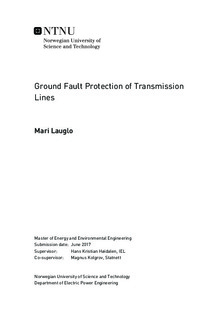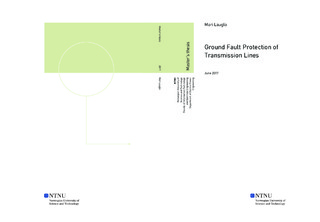| dc.description.abstract | The ever more electrified and energy-intensive society increases the need for a secure power grid and energy service. The transmission system is the backbone of the electrical power infrastructure, to have a well-functioning protection system of this is therefore crucial. The most common type of faults in the power grid are ground faults on overhead lines, which makes it important to be sure about how the relays will measure such a fault. Distance protection is the preferred protection scheme for the transmission grid, thus it is of importance to determine how the performance of these depends on parameters like presence of ground wires, ground conductivity, system neutral earthing, different types of faults and size of fault resistance.
This masters thesis investigates the impact that presence of ground wires has on the ability of the distance relay to detect single phase-to-ground faults in a grid with solid earthed neutral. In compensated earthed networks it is investigated whether the distance relays are able to distinguish two single phase-to-ground faults at two different phases occurring at the same time but at distant locations from a single ground fault. To investigate these scenarios, models of a transmission line and a section of a transmission grid were implemented in the simulation programme ATPDraw. The models were used for testing of various fault scenarios in combination with different system neutral earthing methods, line design and ground conductivity.
It was found that presence of overhead ground wires does not have decisive impact on whether the distance relays are able to detect a single ground fault in a solid earthed grid. However, estimated fault location was severely improved for lines with ground wires compared to those without. Fault resistance was found to be the factor deciding whether a ground fault was detected. For a solid earthed grid lacking ground wires, high earth potential rise at fault location during a ground fault is a concern. The distance relays are displaying a clear difference in measured impedance for one ground fault versus two ground faults. Thus, in theory, it should be possible to implement more advanced protection zones that will only trip the relay for double faults and persistent single faults. However, this subject needs further analysis before a general conclusion applicable to all possible fault scenarios can be stated. | |

